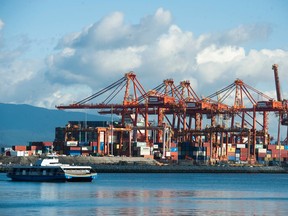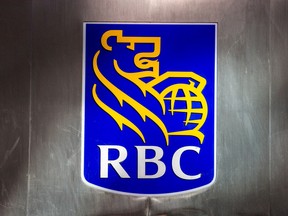Canada looks more like a country that can’t wait to help the U.S. build automobiles

Article content
Repeat after me: “Canada is a Pacific country.”
Advertisement 2
Article content
Again: “Canada is a Pacific country.”
Article content
Third time’s a charm: “Canada is a Pacific country.”
By my count, that phrase appears twice in the federal government’s new strategy for engaging the region formerly known as the Asia-Pacific. Once near the beginning and once at the end.
It was as if the authors — Foreign Affairs Minister Mélanie Joly, Trade Minister Mary Ng, International Development Minister Harjit Sajjan, Defence Minister Anita Anand, Public Safety Minister Marco Mendicino, Immigration Minister Sean Fraser, Natural Resources Minister Jonathan Wilkinson and Fisheries Minister Joyce Murray all had a hand it, according to the press release — thought we needed a reminder that the distance between Vancouver and Seoul is about the same as the distance between Sydney and Seoul.
Advertisement 3
Article content
Canadian ministers don’t go around reminding us that we’re an “Atlantic country” or an “Arctic country,” even though the population of British Columbia is twice that of the four Atlantic provinces, and the population of snowbirds in Florida and Arizona dwarfs the number of people who live above the 66th parallel.
Article content
That’s because Canada isn’t a “Pacific country,” at least not yet.
Joly, MP for Ahuntsic-Cartierville in Montreal, Ng, MP for Markham-Thornhill, just outside Toronto, and Mendicino, MP for Eglinton-Lawrence in Toronto, all flew out to B.C. to join “Harj” (MP for Vancouver South) for a press conference at the Port of Vancouver on Nov. 27, a Sunday, at 9 a.m. local time.
If there were reporters present, none put up their hands to ask questions. The moderator went immediately to reporters on the phone, who postponed their brunch plans to call in from Toronto, Ottawa and Montreal, places where you can choose to fly to New York round trip with two weeks’ notice for about $300, London for about $1,000 or Mumbai for about $5,000.
Advertisement 4
Article content
The most underappreciated force in trade is gravity. The geopolitical cool kids who decided they could get under Xi Jinping’s skin by relabelling China’s sphere of influence as the “Indo-Pacific” can write as many strategy documents as they want. If demand holds up in the United States and Europe, and the price of a flight to the Caribbean or Paris remains a significant bargain compared with a trip to Bali or Hanoi, Canada will remain the kind of nation it’s been since Confederation: one that will struggle to resist the instant gratification that sits right in front of it for a potentially bigger payoff down the road.
The Bank of Nova Scotia, the country’s third-biggest lender, reported net income of almost $2.1 billion in its most recent quarter, and would have recorded an even bigger profit if it hadn’t had to record losses related to the winding down of operations in India and Malaysia, at the same time the government is gearing up to get Canadian companies and investors excited about doing business in those countries. (The Indo-Pacific Strategy devotes a full page to Canada’s plans for India, one of the world’s fastest-growing economies, and singles out Malaysia as a country with which Canada will co-operate on military operations.)
Advertisement 5
Article content
Up until this week, pan-Pacific voyageurs might have signed on with HSBC Bank Canada, a gateway to HSBC Holdings PLC’s rich network of branches throughout Asia. Then, two days after Joly released the Indo-Pacific Strategy, Royal Bank of Canada purchased HSBC Canada for $13.5 billion.

RBC said it was excited by the prospect of extending its global reach. Unless the agreement comes with a provision that will allow RBC to piggyback on HSBC’s systems, it’s unclear how that would work. RBC is huge in Canada and has significant operations in the U.S. and Britain, but no one has ever confused it for a global bank. Like so many other Canadian corporations, it got comfortably rich by staying close to home.
Canadian politicians are equally fair-weather, in some ways literally, as official delegations from Ottawa and the provinces like to descend on Indian destinations in the fall, the one time of the year when you can safely avoid monsoon rains or oppressive heat and humidity. Former prime minister Jean Chrétien’s “Team Canada” trade missions barnstormed China twice, India, Pakistan, Indonesia and Malaysia once, Korea, Philippines and Thailand once, and Japan once between 1994 and 2002 before the effort ran out of steam.
Advertisement 6
Article content
Stephen Harper took a hard line early in his tenure on China over human rights, and then softened as the economic cost of being rude to Beijing began to climb. Justin Trudeau pronounced on the night he was elected that Canada was “back” as a global player, and then he spent the better part of two years obsessed by Donald Trump’s threats to end the North American Free Trade Agreement, proving the impression held of Canada in most capitals around the world is that it owes almost everything it has to the U.S.
-

Businesses relieved as Trudeau’s $2.3-billion Asia strategy leaves room to deal with China
-

Kevin Carmichael: Economy grows faster than expected, raising odds of another big rate hike
-

FP Answers: The Bank of Canada lost $522 million in three months — here’s why
-

Kevin Carmichael: Why the Bank of Canada’s mandate renewal a year ago is causing Macklem headaches today
Advertisement 7
Article content
Trump is gone, but Ottawa still knows where Canada’s bread is buttered. Deputy Prime Minister Chrystia Freeland has become the most vocal champion of the Biden administration’s “friendshoring” push, while Indonesian President Joko Widodo begs his counterparts “not to divide the world into parts,” and French President Emmanuel Macron warns that Washington’s plan to spend hundreds of billions of dollars to root the electric-vehicle supply chain in North America risks “fragmenting the West,” rather than curbing China’s dominance of global manufacturing.
Canada doesn’t look like a Pacific nation; it looks like one that can’t wait to help the U.S. build automobiles, as it has since the early years of the 20th century. Canada has had a free-trade agreement with South Korea since 2015, when goods exported to that country amounted to about 0.8 per cent of total exports. Today, the figure is about one per cent. Canada signed the deal and never followed up.
“Our reputation (in Asia) is like Casper the annoying ghost: we show up and disappear,” Carlo Dade, trade director at the Canada West Foundation, told the Financial Post’s Naimul Karim. “We have to dig ourselves out of the hole that we have dug in the region.”
And maybe that’s why Indo-Pacific Strategy and its $2.3-billion worth of initiatives is significant. At least we have a shovel.
• Email: kcarmichael@postmedia.com | Twitter: carmichaelkevin


